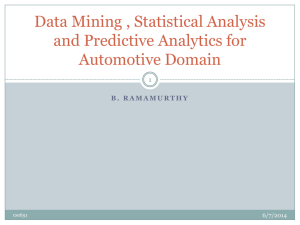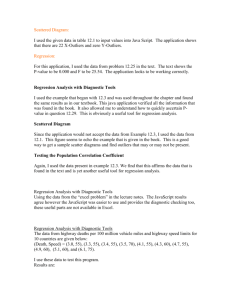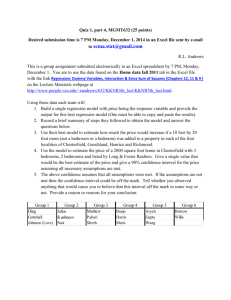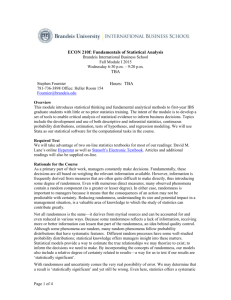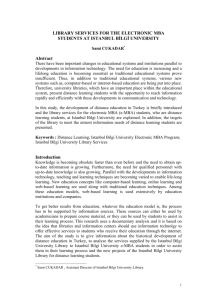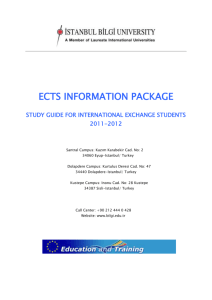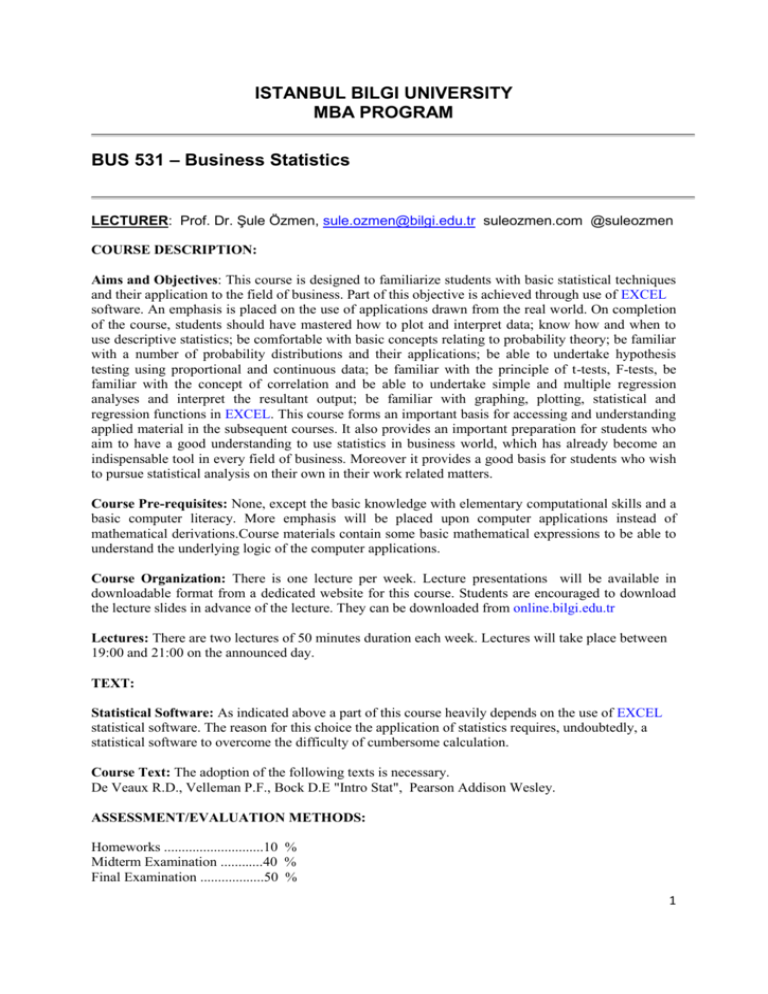
ISTANBUL BILGI UNIVERSITY
MBA PROGRAM
BUS 531 – Business Statistics
LECTURER: Prof. Dr. Şule Özmen, sule.ozmen@bilgi.edu.tr suleozmen.com @suleozmen
COURSE DESCRIPTION:
Aims and Objectives: This course is designed to familiarize students with basic statistical techniques
and their application to the field of business. Part of this objective is achieved through use of EXCEL
software. An emphasis is placed on the use of applications drawn from the real world. On completion
of the course, students should have mastered how to plot and interpret data; know how and when to
use descriptive statistics; be comfortable with basic concepts relating to probability theory; be familiar
with a number of probability distributions and their applications; be able to undertake hypothesis
testing using proportional and continuous data; be familiar with the principle of t-tests, F-tests, be
familiar with the concept of correlation and be able to undertake simple and multiple regression
analyses and interpret the resultant output; be familiar with graphing, plotting, statistical and
regression functions in EXCEL. This course forms an important basis for accessing and understanding
applied material in the subsequent courses. It also provides an important preparation for students who
aim to have a good understanding to use statistics in business world, which has already become an
indispensable tool in every field of business. Moreover it provides a good basis for students who wish
to pursue statistical analysis on their own in their work related matters.
Course Pre-requisites: None, except the basic knowledge with elementary computational skills and a
basic computer literacy. More emphasis will be placed upon computer applications instead of
mathematical derivations.Course materials contain some basic mathematical expressions to be able to
understand the underlying logic of the computer applications.
Course Organization: There is one lecture per week. Lecture presentations will be available in
downloadable format from a dedicated website for this course. Students are encouraged to download
the lecture slides in advance of the lecture. They can be downloaded from online.bilgi.edu.tr
Lectures: There are two lectures of 50 minutes duration each week. Lectures will take place between
19:00 and 21:00 on the announced day.
TEXT:
Statistical Software: As indicated above a part of this course heavily depends on the use of EXCEL
statistical software. The reason for this choice the application of statistics requires, undoubtedly, a
statistical software to overcome the difficulty of cumbersome calculation.
Course Text: The adoption of the following texts is necessary.
De Veaux R.D., Velleman P.F., Bock D.E "Intro Stat", Pearson Addison Wesley.
ASSESSMENT/EVALUATION METHODS:
Homeworks ............................10 %
Midterm Examination ............40 %
Final Examination ..................50 %
1
COURSE OUTLINE
(Chapters refer to the chapters of the course text mentioned above)
WEEK 1
I - Exploring and Understanding Data
Chapter 1: Stats Starts Here
Chapter 2: Data
WEEK 2
I - Exploring and Understanding Data (Continue)
Chapter 3: Displaying and Describing Categorical Data
Chapter 4: Displaying Quantitative Data
WEEK 3
I - Exploring and Understanding Data (Continue)
Chapter 5: Describing Distributions Numerically
Chapter 6: The Standard Deviation as a Ruler and the Normal Model
WEEK 4
II - Exploring Relationships Between Variables
Chapter 7: Scatterplots, Association and Correlation
Chapter 8: Linear Regression
WEEK 5
II - Exploring Relationships Between Variables (Continue)
Chapter 9: Regression Wisdom
Chapter 10: Re – expressing data: It’s Easier Than You Think
WEEK 6
III - Gathering Data
Chapter 11: Understanding Randomness
Chapter 12: Sample Surveys
Chapter 13: Experiments and Observational Studies
WEEK 7
IV - Randomness and Probability
Chapter 14: From Randomness to Probability
Chapter 15: Probability Rules
WEEK 8
2
IV - Randomness and Probability (Continue)
V - From the Data at Hand to the World at Large
Chapter 16: Random Variables
Chapter 17: Probability Models
Chapter 18: Sampling Distribution Models
WEEK 9
V - From the Data at Hand to the World at Large (Continue)
Chapter 19: Confidence Intervals for Proportions
Chapter 20: Testing Hypothesis about Proportions
WEEK 10
V - From the Data at Hand to the World at Large (Continue)
Chapter 21: More About Tests
Chapter 22: Comparing Two Proportions
WEEK 11
VI - Learning About the World
Chapter 23: Inferences About Means
WEEK 12
VI - Learning About the World (Continue)
Chapter 24: Comparing Means
Chapter 25: Paired Samples and Blocks
WEEK 13
VII - Inference When Variables are Related
Chapter 26: Comparing Counts
WEEK 14
VII - Inference When Variables are Related (Continue)
Chapter 27: Inferences for Regression
3




